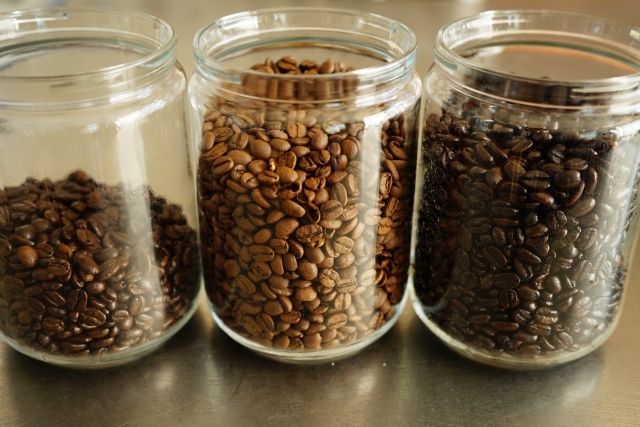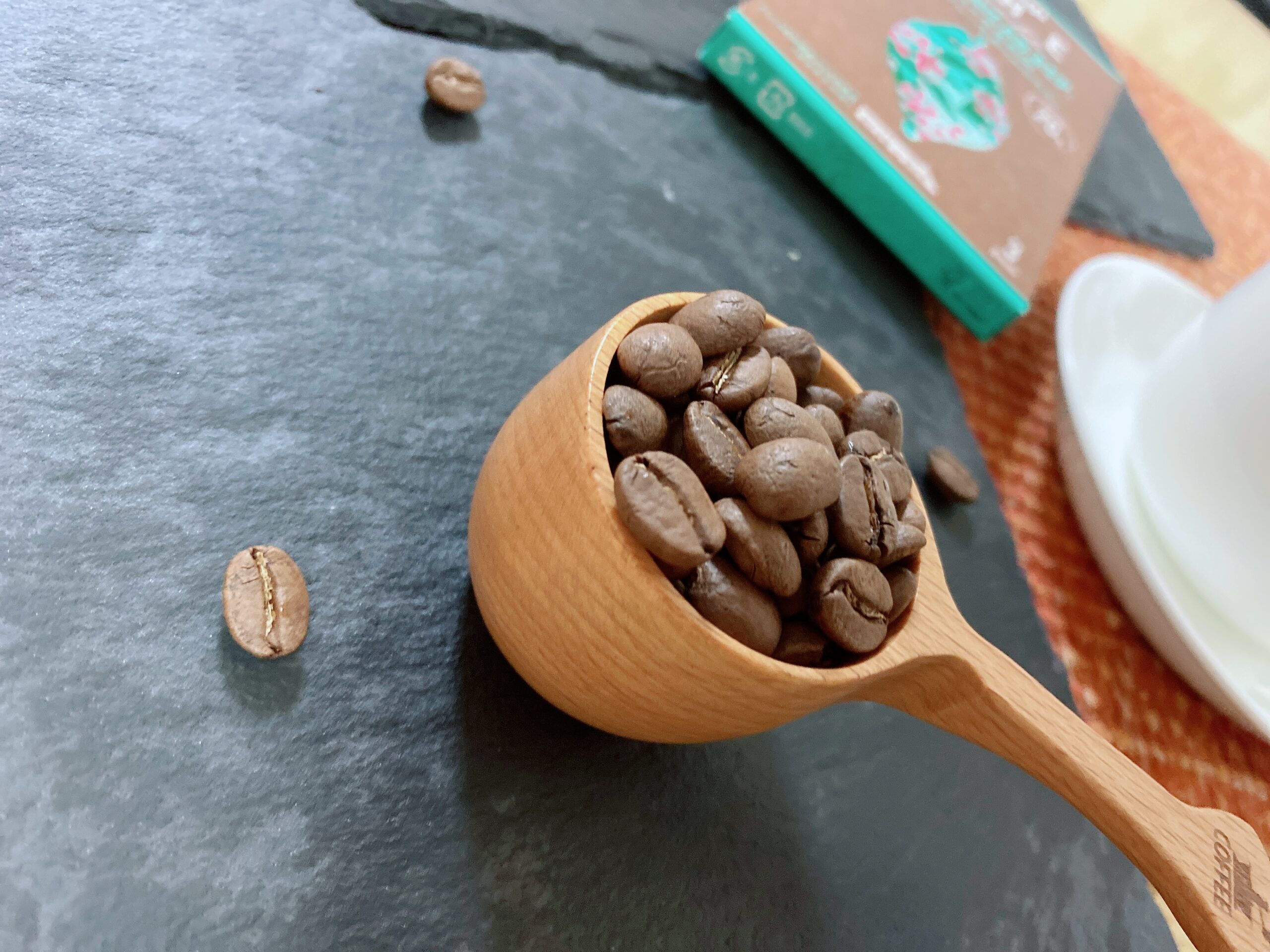Hello, colorful beans!
Today, I will explain the methods of storing coffee beans in this blog post.
First, let me explain my perspective.
Please feel free to store your coffee beans as you like.
It’s perfectly fine for everyone to use simple and convenient methods without any hassle.
In order to do that, please choose the method that suits you best from the options below.
If I had to ask you to do just one thing, it would be to purchase whole beans if possible.
After all, beans are more convenient (you can adjust the grind size according to the brewing method) and they help minimize degradation.
If you find using a coffee grinder to be troublesome or if you don’t own one, it’s perfectly fine to use pre-ground coffee.
As I mentioned in several articles, the most important thing is to enjoy your coffee.
However, it’s important to note that degradation and changes in flavor will occur regardless of whether you use pre-ground coffee or whole beans. No matter how hard you try, it’s inevitable. The only difference is the speed at which degradation occurs.
Store at room temperature in the bag or package you bought it in.
This is the simplest method.
However, degradation occurs at a relatively fast pace.
There are various types of bags available, some equipped with degassing valves, but they still tend to experience faster degradation and oxidation.
If using pre-ground coffee, degradation will happen even faster.
However, whether it’s considered bad or not due to degradation is a matter of personal taste. If the flavor resulting from degradation and oxidation aligns with your preference, then it might be more appropriate to call it “aging” rather than degradation.
if you use a bag
If using a bag, it’s preferable to use a highly airtight one.
Bags that are compatible with vacuum sealing would be a good choice.
While any bag would suffice, for preventing degradation, it’s recommended to use vacuum-sealed bags that have high airtightness.
Regular nylon bags, for example, allow oxygen to enter from anywhere, resulting in faster degradation.
With vacuum-sealed bags, except for when they are opened, the amount of oxygen entering or escaping is reduced, allowing the coffee to stay fresh for a little longer.
It’s also convenient to have bags with zip locks, similar to Ziploc bags, although they don’t provide a perfect seal.
To further extend the freshness, it’s necessary to use a heat sealer. You will need a heat sealing tool.
When it comes to more advanced techniques, it involves vacuum-sealing the coffee beans and heat-sealing them with a one-way valve.
You may have noticed that premium beans often come in bags with a round attachment. This is the one-way valve.
The valve allows the gas produced by the coffee to escape from the inside to the outside, but it prevents oxygen from entering from the outside to the inside.
That’s the functionality it provides.

Refrigerated and frozen storage.
Storing coffee beans in the refrigerator leads to faster degradation compared to freezing.
Freezing, on the other hand, helps to slow down the degradation process compared to refrigeration.
First, let’s discuss storing coffee beans in the refrigerator using bags.
Even large bags can be used for this purpose.
However, when you take the beans out of the refrigerator, condensation (a similar effect to dew) may cause moisture to adhere to the beans. Therefore, I recommend dividing them into smaller portions.
Store the desired amount in small bags and only take out the amount you need.
The same applies to freezing coffee beans.
Compared to refrigeration, freezing allows for longer-term storage.
However, there is a higher risk of condensation with large bags, so it is advisable to divide them into smaller portions, although it may not be mandatory.
Additionally, it is necessary to thaw the beans before grinding because grinding them while frozen can damage the grinder blades. This process requires extra effort and time.
It is recommended to freeze the beans as whole beans only and not in the form of pre-ground coffee.
By using different types of bags such as regular bags, Ziploc bags, vacuum-sealed bags, heat-sealed bags, or bags with one-way valves, you can slow down the degradation process in both refrigeration and freezing methods. Naturally, the order of effectiveness in preserving freshness would be
regular bags < Ziploc bags < vacuum-sealed bags < heat-sealed bags < vacuum-sealed bags with heat sealing.
This allows you to maintain the freshness of the coffee beans for a longer period of time.
vacuum pack
The term “vacuum-sealed” mentioned earlier refers to creating a complete vacuum state by removing all the air from the bag.
In the previous discussion, it was mentioned that bags specifically designed for vacuum sealing have higher airtightness compared to other types of bags.
Here, we are referring to the true meaning of vacuum sealing.
However, please note that vacuum sealing requires specialized equipment.
For your reference
https://www.amazon.co.jp
- Vacuum-sealed at room temperature.
- Vacuum-sealed and refrigerated.
- Vacuum-sealed and frozen.
By following these methods in the order listed, you can prevent degradation of the coffee beans.
storage in jars
This is regarding storage using jars instead of bags.
Essentially, it involves storing the coffee beans at room temperature.
While refrigeration or freezing is not entirely impossible, it may pose challenges such as occupying space or difficulties in preventing water droplets (condensation).
The effectiveness of the seal depends on the structure of the lid of the jar. Therefore, it is advisable to choose jars with high airtightness, if possible.

One of the storage methods I frequently use is also storing coffee beans in jar containers, similar to the photo above.
I utilize different types of lids for the jars.
Furthermore, here are three points to consider when storing at room temperature:
- Oxygen
- Light (sunlight or fluorescent light)
- Humidity
When using jar containers, it is important to choose an appropriate storage location due to their susceptibility to light penetration.
In my case, I also use coffee canisters made of glass from a Japanese company called Nitori. These canisters are available in black or white colors, which are suitable for blocking light.
Reference material
Nitori coffee canister
Next is the issue of storage space. In my case, I have dedicated a corner of my kitchen cabinet as my coffee bean storage area.
I don’t consider the issue of light penetration to be highly significant in this case. The location is not directly exposed to sunlight. Although it is also an option to store the beans in a separate room with cooler and darker conditions, or even in a storage space under the floor, I personally chose a position that allows me to quickly and conveniently access the beans since I use them on a daily basis.
It is important for everyone to choose their own preferred storage method, container, and location, and observe the actual changes in taste over days or weeks using the same beans.
One should consider whether the changes in taste are truly undesirable or unpleasant. Does it make the coffee undrinkable or unenjoyable?
By personally confirming these changes, you can determine the best storage method that suits your preferences.
Storage under nitrogen
While it’s less common, I’ll introduce another method for the sake of completion. However, I don’t expect many people to go to such lengths. It may feel like going overboard.
One such method is vacuum packing with nitrogen filling.
I haven’t personally tried this method, so I recommend referring to the provided reference materials and conducting further research online for more detailed information.
Reference material
https://www.jutenki.com/news/sinkuujyuten/
a little bit of knowledge
I’ve provided various explanations, but the more you read, the more you might feel overwhelmed by the amount of effort involved.
I believe it’s perfectly fine to store your coffee without worrying too much and without adding unnecessary stress.
Contrary to what other blogs or websites might suggest, the beans won’t deteriorate to the point of becoming undrinkable or unpleasant.
So, let me introduce a simple and reassuring method that can offer some peace of mind.
- Insert oxygen absorbers.
- Place a moisture absorber (such as diatomaceous earth) inside.
By simply adding these items to your bags or containers, it can provide some peace of mind.
Let’s enjoy our coffee life in a relaxed, easy, and enjoyable manner.
Let’s cultivate a sense of tranquility in our hearts!
Postscript
Coffee beans, due to their low moisture content, can generally be considered resistant to spoilage. While their flavor and aroma may weaken over time, they do not “rot” or go bad.
Even after about a year, they can still be enjoyed and taste delicious.
Of course, this is my personal opinion, but instead of worrying too much, let’s embrace a carefree attitude and simply enjoy our coffee!
Thank you for reading this far.





コメント